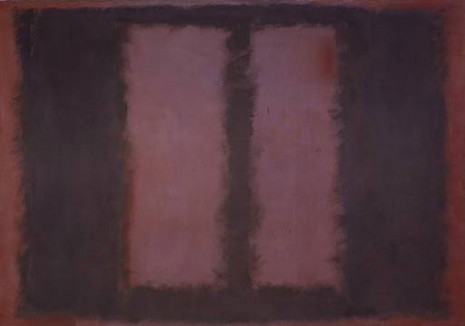
The artist Mark Rothko died today on the 25th February 1970. His body was found in his studio by his assistant. He had ingested an overdose of barbiturates and had slashed an artery on his right arm. He lay in a sticky pool of blood, dressed in white long-johns and black socks. Rothko was sixty-six. He had been suffering from depression, and had also been diagnosed with a mild aortic aneurysm.
His death increased the value of his paintings overnight - the price nearly doubled. More interestingly, his death led to legal suit by his children against his gallery and the executors of his estate.
The trial revealed that Rothko’s dealers, the Marlborough Gallery, and his executors had conspired to “waste the assets” and defraud his children out of their rightful share of their father’s estate. It was also found the gallery had deliberately stockpiled and undervalued Rothko’s paintings for years, with the intention of selling them at an increased value after his death. The Marlborough had purchased “one group of 100 paintings for just $1.8million, a sum it would pay over 12 years and with no interest, with a down-payment of only $200,000.” The total assets of 798 paintings were worth a minimum of $32million.
In 1975, the defendants were found liable for “negligence and a conflict of interest”. They were removed as executors of the Rothko estate, by court order, and, together with the Marlborough Gallery, required to pay a $9.2 million damages to the estate. Sounds a lot, but not much when compared to the value Rothko’s paintings have since attained - his 1954 painting, Homage to Matisse sold in 2005 for $22.4million, while his 1950 White Center (Yellow, Pink and Lavender on Rose), sold for a record $72.8 million
Simon Schama’s excellent documentary on Rothko starts off with Schama’s own epiphany when first seeing the artist’s paintings:
“One morning in the spring of 1970, I went into the Tate Gallery and took a wrong, right turn and there they were, lying in wait. No it wasn’t love at first site. Rothko had insisted that the lighting be kept almost pretentiously low. It was like going into the cinema, expectation in the dimness.
Something in there was throbbing steadily, pulsing like the inside of a body part, all crimson and purple. I felt I was being pulled through those black lines to some mysterious place in the universe.
Rothko said his paintings begin an unknown adventure into an unknown space. I wasn’t sure where that was and whether I wanted to go. I only know I had no choice and that the destination might not exactly be a picnic, but I got it all wrong that morning in 1970. I thought a visit to the Seagram Paintings would be like a trip to the cemetary of abstraction - all dutiful reverence, a dead end.
Everything Rothko did to these paintings - the column-like forms suggested rather than drawn and the loose stainings - were all meant to make the surface ambiguous, porous, perhaps softly penetrable. A space that might be where we came from or where we will end up.
They’re not meant to keep us out, but to embrace us; from an artist whose highest compliment was to call you a human being.”
Schama is a cultured story-teller, who has a great enthusiasm for his subject, and he fully appreciates the value of the small tale by which an artist’s life can be apprehended. One particular sequence, highlights the irony of how Rothko, who famously removed his paintings from a swanky Four Seasons restaurant at the Seagram Building, in New York, because:
“Anybody who would eat that kind of food, for that kind of money, will never look at a painting of mine.”
has become the center of such phenomenal financial speculation.
Previously on DM
Revealed: Caravaggio’s criminal record
Notes towards a portrait of Francis Bacon